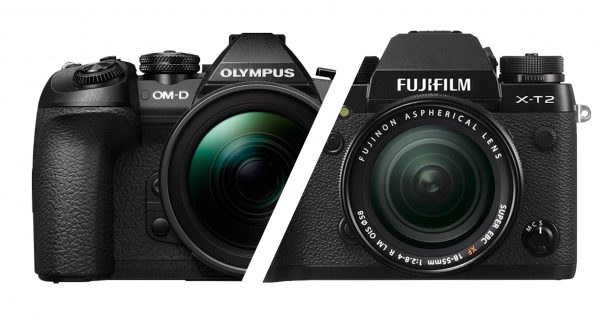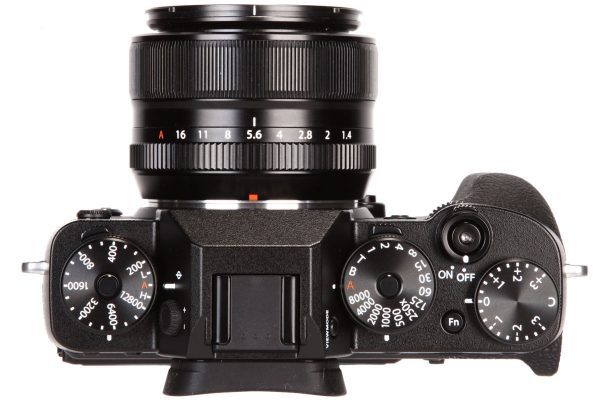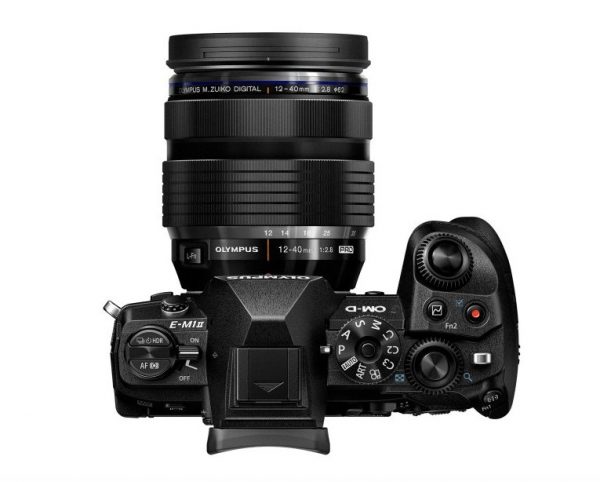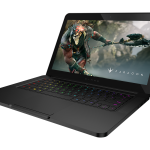
Mirrorless cameras have been with us for over a decade but have until recently been seen by some as mere toys when compared to the more ‘professional’ DSLRs. Today, the range of mirrorless cameras is more than enough to cater to most users, including professional photographers.
The only area that mirrorless cameras have not yet established firmly in is in action and sports photography. That, however, may change with the introduction of the new Olympus OM-D E-M1 Mark II and Fujifilm X-T2.
Touted as the flagships of their respective mirrorless camera range, they represent the best the companies can offer today. How do they fare next to each other?
Ergonomics
The first thing to do is to “feel” the cameras. How are the controls placed in relation to each other? How do the controls, dials, joysticks and even the on/off buttons work together to allow a photographer to quickly get to the settings that they need?

Of the two, the Fujifilm gives me easier access to controls I would need when setting up my camera. The ISO, Aperture, Shutter, metering mode and drive mode are just fingers away with a turn or a flick of the lever.
Some buttons may be small but at least they can be pressed down pretty easily, a far cry from the X-T1 that has flushed buttons.
The only button that I just have to lament about is the function (fn) button, placed between two huge dials – the Shutter speed and the Exposure Compensation which makes it hard to reach.
There are other ways to get to the settings, but having a button unused is a waste when real estate is pretty scarce on the top plate for such a small camera.

What the Olympus camera has is a good grip, chunky buttons and dials. Mirrorless cameras are meant to be small but they have to feel secure in your hands too. The X-T2 is comfortable but the E-M1 Mark II gives the security that I feel when handling a DSLR.
This helps when you have a large lens attached and you need to hold the camera well while shooting. Although the E-M1 Mark II does not have direct access to the settings, I still can customise it easily with less than three button presses if I programme the camera’s function buttons correctly.
Verdict: During shoots both cameras reacted well and settings were changed fairly quickly. The Fujifilm camera was generally better in this regard. You can have it switched on and shoot much faster than the Olympus because the on/off switch is just right under the shutter button.
I would recommend buying vertical grip attachments for both cameras to have a firmer hold when matched with a longer or heavier lens.
Specifications
The Fujifilm camera’s 24 megapixels trump the Olympus camera’s 20 megapixels on paper, but you should always ask why the need for so many megapixels when most of the photos we print are in mostly 4R size.
For most users, both cameras have more than enough pixels to be used for sharing on Facebook to A3-sized photo books. The XT-2 has the bigger APS-C sensor and packs more pixels than the Olympus’ Micro Four Thirds (MFT) format.
If we go with the area each pixel occupies, the XT-2 sensor has more than the EM-1 Mark II’s (15.34µm2 vs 11.22µm2) and that does help with capturing more light.
In-camera image processing has improved tremendously for most modern cameras now. Even smaller sensors are doing much more and they are comparable to cameras with bigger sensors. What’s left is the image quality of the cameras.


If you’re shooting action or sports, the Olympus’ 15 frames-per-second speed with mechanical shutter wins hands down over Fujifilm’s 14fps. However, it is let down by the number of focusing points, which at 121, are much fewer than Fujifilm’s 325.
Not that good photographers need so many of these auto focus (AF) points but it is good to have an option when the need arises. What is more important is the ability to get the AF lock quickly and accurately.
This is where the EM-1 Mark II shines. It gets a subject in focus way quicker and hence can shutter much faster.
The black-out time when the camera’s electronic viewfinder is switched off while it saves the images into the memory card has improved for both cameras. As a result, I did not find myself disoriented when the viewfinder came back on again. Between the two, the EM-1 Mark II is definitely easier to use for sports/action sequences.
Verdict: Both cameras should work well on paper. While the XT-2 edges ahead in terms of the number of AF points, Olympus’ faster AF speed ensures that the EM-1 Mark II shoots quicker and at a faster rate for sports and action. You get have more photos to choose from a sequence of shots.
If you shoot a lot of action shots, the EM-1 Mark II is the camera to get. That said, both should do well for other scenarios such as portraiture, macro and landscape.
Image Quality
Beauty is in the eye of the beholder and image quality is something that is pretty subjective. Obtaining the right lens to use with the camera can only maximise the quality that the camera can produce.
I was shooting Dia de Muertos or Day of the Dead festival over at Emily Hill recently and found the 12-100mm f4.0 lens from Olympus having a lot of trouble in extreme low light conditions. Or in areas only lit by candlelight. I changed to the company’s new 25mm f1.2 lens and the images came out beautifully.
The other thing that differentiates the Olympus and Fujifilm cameras is the Automatic White Balance used to bring about an accurate colour to a scene. Under artificial light, the EM-1 Mark II produces more yellow tint to the images, while the XT-2 produces a more natural hue. Both cameras work well in natural lighting.


The Fujifilm edges out the Olympus when it comes to shooting in challenging scenes. That being said, Olympus has made huge strides in improving its low light performance.
If the cameras are set up correctly and using the right lens, I have no doubt both are up to the task. What makes the difference is how the cameras handle colour, in a way that appeals to the buyer.
Verdict: I am leaning towards Fujifilm’s excellent colour reproduction but the Olympus E-M1 Mark II did surprise me this time, by surpassing the Pen-F. Olympus has improved a lot but you need a good lens to maximise the camera and that’s where Fujifilm has an edge again with a more extensive lens range.
Conclusion
One thing’s for sure – mirrorless cameras have come a long way and there isn’t a really huge difference between the two top-end models I tested here.
It is only when you would like to have a much creamier bokeh or blurred background then the getting the bigger sensor on the XT-2 will help. That’s great to have but isn’t something you use all the time.
For most other tasks, both cameras are excellent if matched with the right lens. The S$2,848 Olympus E-M1 Mark II (body only) and the S$2,599 Fujifilm X-T2 (body only) are both worthy mirrorless counterparts on a photographic journey today.







Personally, the low light shot on the X-T2 is so much better….nicer color tone, dynamic range is more natural, cleaner and better highlights summed it up, no fight at all from the Oly E-M1 M2…YMMV
Wonder where you get these prices?!
Hi. They are the recommended retail price from the companies themselves. Thanks
The X-T2 retails for $1,599.00.
Price quoted here is in Singapore dollars.